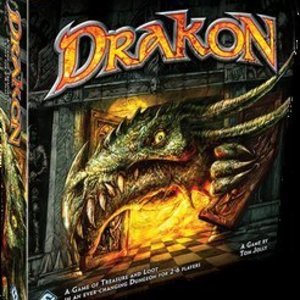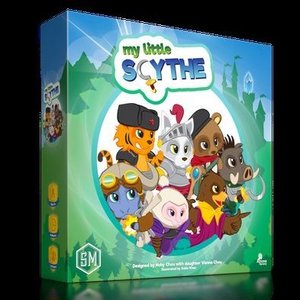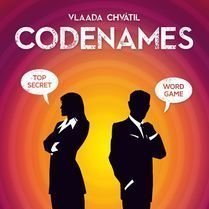Purple Phoenix Games (2266 KP) rated Top Pop in Tabletop Games
Jul 22, 2021
Top Pop is a 2-5 player (well, I would say 3-5) card game of market penetration and territory influence. In it, players are representatives of rival pop manufacturers bent on skyrocketing their company’s popularity in various major cities across the country. The winning rep is they who can diversify their influence and hit influential cities hard and often.
DISCLAIMER: We were provided a prototype copy of this game for the purposes of this review. These are preview copy components, and I do not know for sure if the final components will be any different from these shown. Also, it is not my intention to detail every rule in the game, as there are just too many. You are invited to download the rulebook, back the game through the Kickstarter campaign, or through any retailers stocking it after fulfillment. -T
To setup a game of Top Pop, refer to the rulebook to determine the starting resources per number of players. Each game is setup differently depending on how many players are involved. Shuffle the deck of city cards, and if using the optional City Power or Scenario variants, place these cards on the table for all to access as well. Each player chooses a color, receives the appropriate starting resources and the game is ready to begin!
On the active player’s turn, they will complete the following steps: Collect City Cards, Play a City Card, Take Caps, Place Stacks, and then Draw a Card. The first turn of the game Collect City Cards is skipped, but after that, each card the active player owns the largest stack of tops on they will collect. Caps that were stacked on the card are redistributed depending on where the card was placed (in front of the active player or a rival player). Next, the player will Play a City Card from their hand either in front of themselves or in front of a rival player. This is an important step to consider because once a card has been claimed then caps are distributed according to card placement, as referenced in the first step. Also noteworthy here is that if a card is placed in front of a rival, the active player takes one of said rival’s caps (Take Caps) from the bank of caps in the middle of table as well as a cap of the active player’s choice.
Now that the active player presumably has some caps with which to play, they Place Stacks on any City Card(s) they wish. The stacks of caps need to be the tallest stack on the card, must include a cap of the same color of the player who currently owns the highest stack, and must also be topped with a cap of the active player’s color. Any amount of caps may be added to a City Card in order to achieve these requirements, and the active player may place stacks on any number of City Cards in play. Once the active player has placed all caps they wish, they must then Draw a Card and prepare for their next turn.
As City Cards are played, caps placed out in stacks, and players winning bids on cards, players are jockeying for endgame points. The game ends after a player collects their sixth City Card and every other player has a chance to spend their remaining caps to claim cards. At the end of the game, points are awarded for having simple majority in each city as well as points for collecting a more diversified set of City Cards. The player with the most points scored at the end of the game wins!
Components. Again, this is a prototype copy of the game, so components are in no way final. Most notably, the final copies of Top Pop will include nice plastic stackable bottlecaps that look way better than the painted wooden discs (which for a prototype, are actually quite nice). The City Cards look and feel complete to me, and are pretty impressive. I like the art quite a bit and the game’s style is spot on. I am very excited to see how this one ends up, and I think gamers will love handling the finished bottlecaps.
There is a lot going on here that is hard to put into words. I played this solely three-player and included the City Powers with a few Scenarios (Kickstarter exclusives, I understand). I found the base game to be very good, but adding in those optional rules really makes it pop for me (I know you saw what I did there). Every player is constantly engaged throughout, and the tactical play always has me considering tons of options. I would not necessarily want to play this with extremely AP-prone players, but it is quick enough to include them as well from time to time.
What I like most about Top Pop, in addition to the overall aesthetic (even in the prototype), is the tactics in watching what other players are collecting, where the cards are placed, and cross-referencing all that with your personal bottlecap economy. There are just so many things to consider on each turn that makes me hungry for more and more plays. I say this a lot, but when I think about a game and ways I would attack it differently outside of the game session, that is a mark of a great game to me. And this one is a great game to me.
If you are looking for a uniquely-themed bidding card game with (promised) excellent components, I urge you to check out the Kickstarter campaign, which ends August 7, 2021. And on a personal note, I’m so excited to have both Chicago and New Orleans in this game. Two of my favorite cities in the world!
Rikki Hammond (33 KP) rated Drakon (fourth edition) in Tabletop Games
May 24, 2019
Each player will have 4 tiles in their hand, and on their turn, they can either place a tile (drawing a new one afterwards) or move their character into an adjacent chamber. Each tile has a door or an arrow on each side. You can place a tile door to door or arrow to door, but never arrow to arrow. Once a player moves through a door, you can't go back the eay you came (by the usual means anyway.) The goal of the game is to collect 10 coins through entering a chamber with gold in it, or by stealing them from another player. Each coin will have a value between 1 and 3, and the players keep them secret from the others.
A chamber might have an effect associated with it, which is activated when someone mives into it, such as allowing you to rotate a chamber, removing one from the game entirely, teleporting to another part of the dungeon, or even unleashing Drakon the dragon into the dungeon.
Once Drakon is in the dungeon, whoever next lands on her space can move her up to 3 spaces, ignoring doors and arrows along the way. If she ends on a space with a character, that player must put back a random coin into the stack and return to the entrance chamber.
Once someone collects 10 coins total, they win the game. If the tile stack runs out, the game automatically ends, and the player with the most coins at the end will be the winner.
For the base game, I would say that Drakon is TOO simple, and I highly recommend playing with the alternate methods, which gives each character it's own unique power to use once per game, and whoever collects 10 coins must then either make it back to the entrance chamber, make it to a teleport tile, or use an escape tile. This makes the game a lot more fun in my opinion, and also adds the element of the other players trying to stop you if they suspect you are trying to escape.
Drakon can be a mixed bag. Sometimes the games are really enjoyable, as the chambee effects can really play havoc with other players, esoecially if Drakon comes out. Other times, it can be rather boring, and sometimes a player can build an infinite loop of collecting coins, with no way of stopping them, which isn't really fun for anyone. I also feel that anything over 4 players makes the game a little too chaotic, and it can make the game overstay it's welcome. Generally though, Drakon is a quick, light filler game that can hold up well in anyones collection.
Purple Phoenix Games (2266 KP) rated Hanamikoji in Tabletop Games
Jun 12, 2019
Hanamikoji is a 2-player game where players are competing to win the favor of the 7 Geishas. In a game of literal give-and-take played over several rounds, you and your opponent will alternate taking 4 actions to play and trade cards. The first player to win the favor of 4 Geishas, or to earn at least 11 Charm points, is the winner!
For as simple as it seems, Hanamikoji requires a lot of strategy. The cards in your hand are hidden from your opponent, but half of the actions taken each round require you to reveal cards from your hand and allow your opponent to take a certain number to their side – a traditional “I split, you choose” mechanic. You have to strategize which cards you can afford to give up, at the risk of letting your opponent win a Geisha, with the goal of winning a higher-valued Geisha instead. At the same time, your opponent will be revealing cards from their hand for you to take to your side. Your strategy is always changing based on not only the cards in your hand, but the cards that your opponent reveals to you.
One thing I really like about this game is that winning the favor of a Geisha in one round is not final. If I win a Geisha in one round, but in the next round my opponent has the majority for that specific Geisha, I lose her favor and she goes back to neutral. So not only am I trying to win over more Geishas each round, I have to actively be protecting those I have already won. The same can be said for the reverse – even if my opponent wins a Geisha in one round, I can negate that in the next round. The favor of the Geishas does not reset at the end of each round, nor is it unchangeable in future rounds. Anything can happen, and that makes for a surprisingly exciting game.
Although this is a competitive game, I find it to be kind of calming to play. It is simple, yet strategic, and the artwork is beautiful. In my experience, once you understand the gameplay and actions, it plays quickly and quietly. If you’re looking for a quality 2-player game, give Hanamikoji a try! Purple Phoenix Games rates it a graceful 10 / 12 (Bryan and Josh have not yet played it).
https://purplephoenixgames.wordpress.com/2019/02/13/hanamikoji-review/
Purple Phoenix Games (2266 KP) rated My Little Scythe in Tabletop Games
Jun 12, 2019
Accost me later, but I have never played Scythe. I have played lots of area control and pick-up-and-deliver games. I have just now oversimplified an already mechanics-simple game. Without explaining the entire rulebook here, you are these cute little animal “seekers” who are buzzing around the board collecting apples and gems to deliver to the castle, upgrading your movement or “make” abilities, completing quests on the board, improving friendship, baking pies, or even winning pie fights against your opponents! Each of these accomplishments can equal trophies for your team and the first to four trophies triggers the end game.
Ok the good stuff. Everything. I absolutely love this one. The board is BIG, beautiful, colorful, and it makes me happy just looking at it. The theme is so easy to love, and the goals are clear. The game play couldn’t be simpler in what you do on your turn, and the components are absolutely top notch. It certainly doesn’t overstay its welcome on the table, and I want to keep playing it over and over. Those are signs of a GREAT game to me.
So, the bad. Well, I don’t really have anything negative to say about this at all. At least not that is the game’s fault. I have different strategies I still want to try in the game, but that keeps me playing more and that is actually a positive trait. Ok ok fine, I will give it a couple negatives, but they are just MY opinion based on what I enjoy. Can we borrow the idea of the berry component from Everdell to make the apples here cuter and squishy? Can we linen finish the cards? Can we make the Quest tokens bakelite or acrylic or something other than cardboard? Can the trophies be pre-painted minis of trophies? Can the seeker minis be pre-painted? Yeah sure. All that could easily be added to this game. But be prepared for another $50 added to the price (maybe, idk, I’m not a component manufacturer. Jamey, what’s the cost to bling this out?).
I digress, but the game is super solid. If you see it in the wild and you do not yet own it, pick it up. You will certainly thank me later. Let’s just propel this one into my Top 10 Games of All Time. Looks like I am not alone as Purple Phoenix Games gives this lovely adventure a 22 / 24.
https://purplephoenixgames.wordpress.com/2019/02/08/my-little-scythe-review/
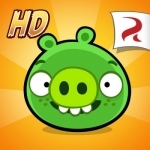
Bad Piggies HD
Games
App
From the creators of Angry Birds: a game from the PIGS’ point of view! OiNk! Build makeshift...
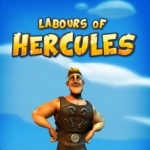
Twelve Labours of Hercules
Education
App
Are you in becoming Hercules, the son of Zeus, the invincible legendary hero? Learn mythology while...
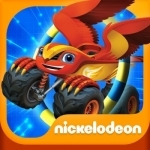
Blaze: Obstacle Course
Education and Games
App
Help Blaze and the Monster Machines overcome the ultimate obstacle course as Blaze speeds over land,...
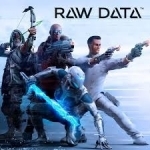
Raw Data
Video Game Watch
Neo-Shinjuku - 2271. The massive and seemingly benevolent Eden Corporation owns the world. The elite...
action multiplayer

Littlest Pet Shop Your World
Games and Entertainment
App
Bring your Littlest Pet Shop world to life digitally when you scan your favorite toy pets to unlock...
Matthew Krueger (10051 KP) rated Codenames in Tabletop Games
Jul 17, 2020 (Updated Jul 18, 2020)
I learn about this game through the Funhaus Channel. And personality wanted to buy it after watching it. It looked easy, fun and entertaining. So when i saw it at Pax i knew i had to by it. If you dont know what Codenames is or never heard of it. Let me explain.
Codenames is a party deduction word card name for 2-8 people. It came out in 2015, designed by Vlaada Chvátil and published by Czech Games Edition.
The Objective: Two teams compete by each having a "spymaster" give one-word clues that can point to multiple words on the board. The other players on the team attempt to guess their team's words while avoiding the words of the other team.
The Gameplay:
Players split into two teams: red and blue. One player of each team is selected as the team's spymaster; the others are field operatives.
Twenty-five Codename cards, each bearing a word, are laid out in a 5×5 rectangular grid, in random order. A number of these words represent red agents, a number represent blue agents, one represents an assassin, and the others represent innocent bystanders.
The hint's word can be chosen freely, as long as it is not (and does not contain) any of the words on the code name cards still showing at that time. Code name cards are covered as guesses are made.
After a spymaster gives the hint with its word and number, their field operatives make guesses about which code name cards bear words related to the hint and point them out, one at a time. When a code name card is pointed out, the spymaster covers that card with an appropriate identity card – a blue agent card, a red agent card, an innocent bystander card, or the assassin card – as indicated on the spymasters' map of the grid. If the assassin is pointed out, the game ends immediately, with the team who identified him losing. If an agent of the other team is pointed out, the turn ends immediately, and that other team is also one agent closer to winning. If an innocent bystander is pointed out, the turn simply ends.
The game ends when all of one team's agents are identified (winning the game for that team), or when one team has identified the assassin (losing the game).
Its a fun entertaining deduction party card game and can be played over and over again without losing its charm. Its excellent board game and a must buy if you haven't bought it yet.

